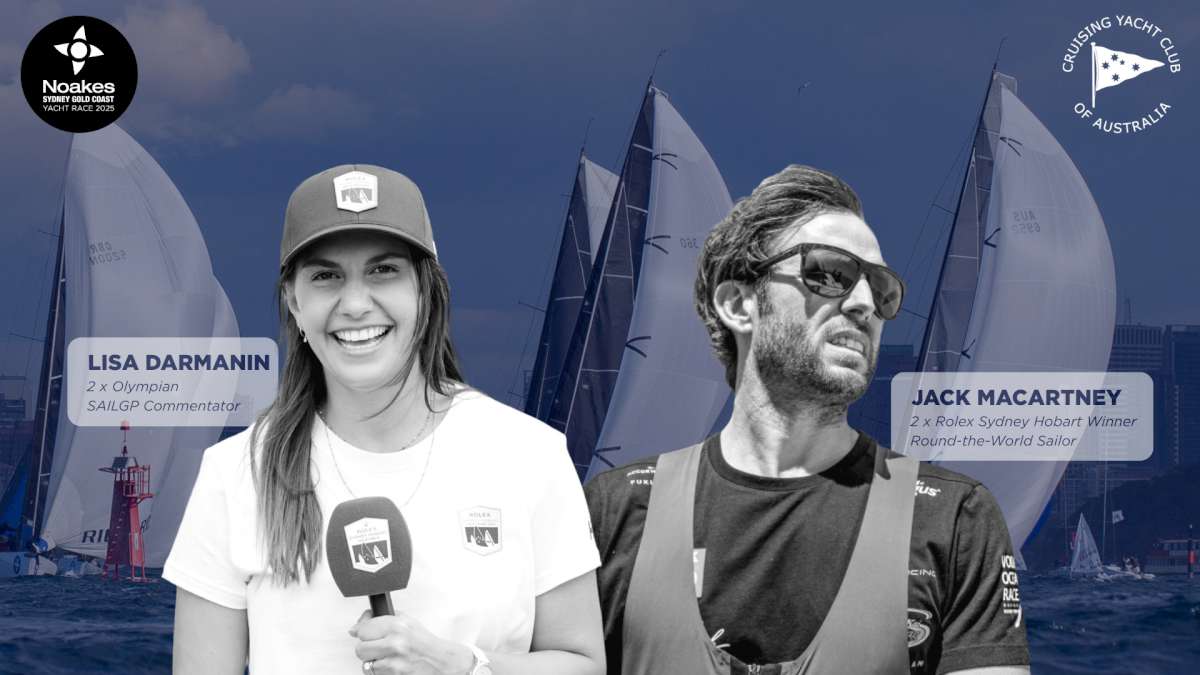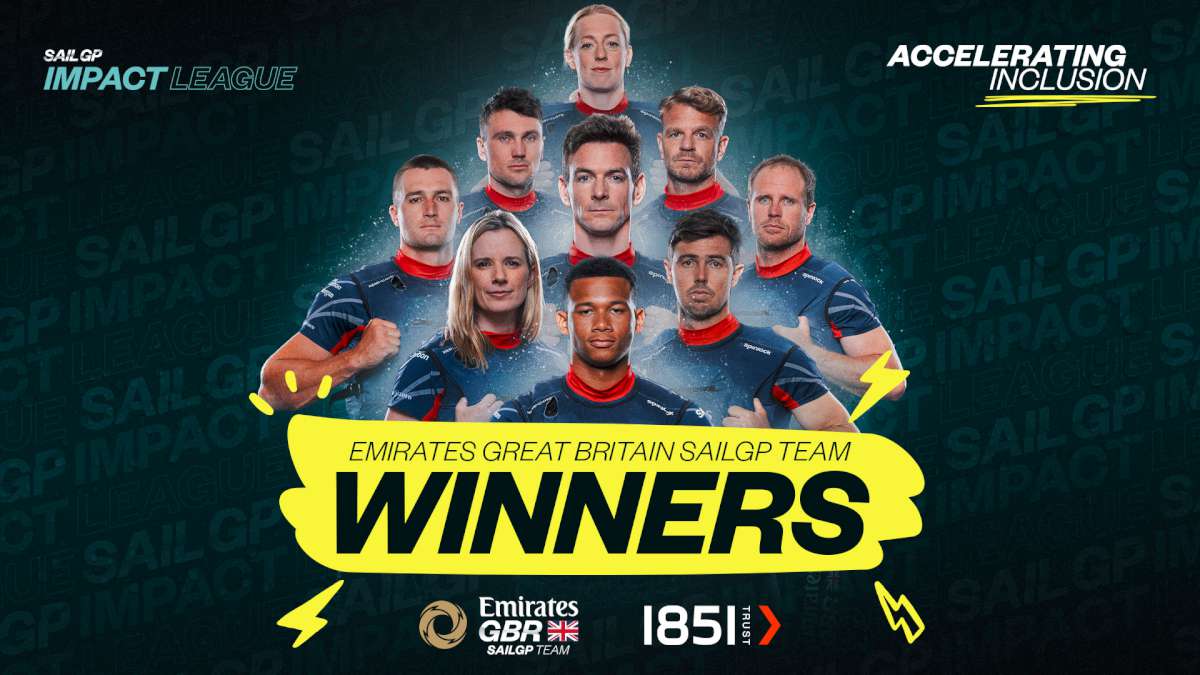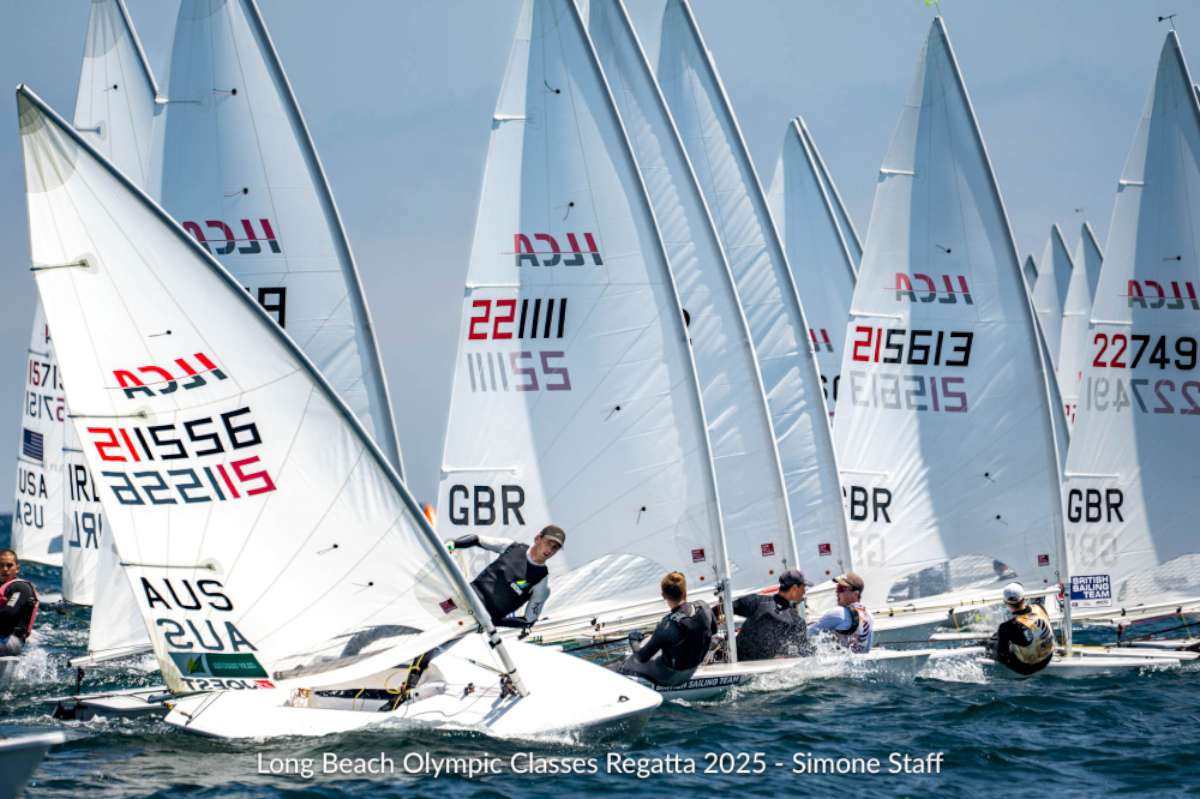The Extreme Sailing Series provides probably of the best spectator experience in the world of sailing. Ten or more high-performance, 40 foot long catamarans are crammed into a restricted space with spectators literally only metres from the action.
You can hear lines running through blocks, sails slatting from one side to the other, the rush of water past the hulls and, of course, the crews talking to each other. When things are really tight (and they often are) you will also hear “requests” shouted from one boat to another. Sometimes the expletives are NOT deleted.
Another thing that sets the Extreme Series apart is the sheer volume of races you get to watch. They are short and sharp, usually two laps of a very tight course. And the boat that wins the first race may be dead last in the next. How is that possible? Shouldn't the cream rise to the top as it does in every other class?
I asked defending ESS champion Leigh McMillan to explain what happens out on the water and what is needed to win consistently, as Leigh has usually managed.
Off the Line
Instead of the usual ISAF start where signals are given at 5 minutes, 4 minutes, 1 minute and the start, in the ESS they use a countdown from 4 minutes. The first leg will often be a reach rather than the traditional beat to windward, changing the tactics required immensely.
“At the start there's not a lot of space,” Leigh says. “It's very tight between all the boats. You need to have a good strategy before the four minute sequence begins as to exactly what you want to achieve. You have to see which end is favoured for the reaching start.”
In Sydney you will see this first-hand. Some skippers will go to the line very early and sit in their preferred position, daring anyone to try to get underneath them. Ben Ainslie is a past-master at this as is Morgan Larsen on Alinghi.
Others, including Australia's Nathan Wilmot on GAC Pindar, will vary their tactics, sometimes even “floating” behind the first line of boats then trying to nail time-on-distance and hit a hole at full speed. If they get it right, this can lead to a catapult into a dominant position, but get the timing wrong and you can be dead last.
“It's a critical process of boat handling and communication among the crew,” says Leigh McMillan. “We all have to react in time with each other. It's exceptionally difficult. You have to nail the trigger time. You're within metres of the line and a second early or a second late and you've missed it.
“It's a never-ending process of trying to get it right. It comes down to the simple things but when you're under pressure you can't see them. It's only when you view the video later that you see you were a split second early or you didn't get the bow down at the right time.”
Extreme skippers often refer to “pulling the trigger” which Leigh explains is the complicated process of going from zero to full speed in three or four boat lengths, which is possible only when every member of the crew gets their timing exactly right.
“The angle of the boat is vital – not too close to the wind. You need some flow on the foils so you can rotate down. If you drop the traveller a second too early you'll stall.”
So that's what to look for when watching the starts – the skipper getting his bow angle right and the trimmers dropping the traveller and sheeting on in perfect unison.
Australia's Chances
Although Australian skippers Mitch Booth, Nick Maloney and Adam Beashel have all steered Extreme 40s regularly, this is the first year a full Australian team has been represented. Seve Jarvin had the helm in the first Acts before taking over a trimming role for 2008 Olympic 470 Champion Nathan Wilmot.
The early results were not good, with GAC Pindar languishing at the back of the fleet. Cardiff was the turning point, when Wilmot managed to get some top three finishes but still struggled for the consistency needed to move up in the overall.
Leigh McMillan advised Australian supporters, used to seeing their heroes at the front of any fleet, to exercise some patience.
“You can't expect to come into the Extreme 40s and win straight off. It's difficult to build up the expertise and timing. The boat catches me out time and time again, even after all these years,” he says.
With a reasonably settled crew now having raced together at four Acts, we hope to see GAC Pindar at the front more regularly, but one thing is for certain. Like McMillan, Larsen, Ainslie, Hagara and the other experienced skippers, Wilmot will spend some races following the others home.
It will also be interesting to see how another Australian Olympic Champion, Tom Slingsby, goes in his first Extreme experience. Slingsby had instant success helming Oracle's AC45 in Naples in 2013 and he has the advantage of a regular crew on board Oman Air. But as Leigh McMillan has explained, timing and perfect bow angle are critical to a good start – Slingsby will probably nail some and muff others, just as all his peers have.
Be in Front
The old adage of “win the start, win the race” is very apt in the ESS, as McMillan explains: “The races are so short there are minimal opportunities for overtaking. You have to spend your time trying to stay out of trouble. It's a constant battle, opportunities are few and far between.
“If you get a bad start all you can do is try to pick off one or two boats, because that could make a difference over the four days.
“At the first mark and even the gybe mark there are sometimes chances to get some clear air.
The fleet slows itself down and sometimes you can go around the ones in front if there's a wind shift. But even if you're seventh or eighth you're defending as well as trying to pick up one or two places ahead.”
Work as a Team
GAC Pindar's lack of success early in the season was compounded by constant crew changes. With timing so vital, everyone has to know what the others will do and exactly when they will do it. There is no room for individualism in Extreme racing.
“You've got to stay absolutely onside with each other,” says McMillan. “All onboard are trying to achieve the same thing so we'll discuss what someone could have done differently but they're not accusations, it's trying to get everyone working together. Team spirit and a positive atmosphere are absolutely vital.”
He adds a bit of advice that some “weekend warriors” and twilight sailors could do well to ponder: “It's easy on a boat to have one person who changes the atmosphere. You've got to make sure that it changes for the better.
“As skipper, that makes it quite demanding. I have to make sure everyone's working to their maximum but that's not being on their backs,” he cautions. “We're very good at looking forward to the next race – the whole crew does that. If we have a bad one we forget about it and concentrate on getting the next one right.”
Temperament
Anyone who knows Nathan Wilmot knows he's one of nature's laid back characters. Tom Slingsby, on the other hand, like Ben Ainslie is ultra-competitive and intense when sailing. McMillan, too, has a reputation for being a great guy off the water but a highly-charged animal when he gets the tiller of an Extreme 40 in his hands.
“The tempo changes very quickly on these boats and I try to keep myself relaxed,” he says. “I've got to push myself hard and demand that of the team too. If you're too relaxed you mess things up, but you do if you're over-tight too.”
If you are watching the Act in Sydney from the Opera House or one of the other close-in viewing areas, listen for the shouting and watch the body language to see which skippers are handling the pressure and which are letting it get the better of them.
“At the Olympics you're competing for yourself, although the team atmosphere is incredible. But the Extreme is a whole different event. It's a different kind of pressure,” McMillan warns. “You run through the whole range of emotions. The tempo is intense. It's rewarding and punishing. I love it… and I hate it…”
The final Act of the Extreme Sailing Series will take place in front of the Sydney Opera House from Friday December 12 to Sunday December 14, with the village open from 10.30am and racing starting at 2pm. Whatever you do, don't miss it!
More event information is available at http://www.extremesailing.com.au/
– Roger McMillan, editor.
Leigh McMillan, no relation to the mysailing editor, skippers The Wave, Muscat in the Extreme Sailing Series, which he has won twice. He has two Tornado World Championship silver medals to his name and competed for Great Britain in the Tornado class at the 2004 and 2008 Olympics.
























